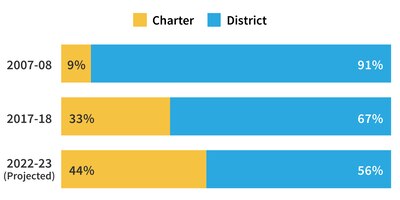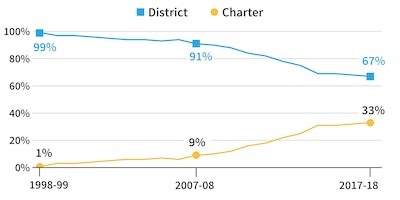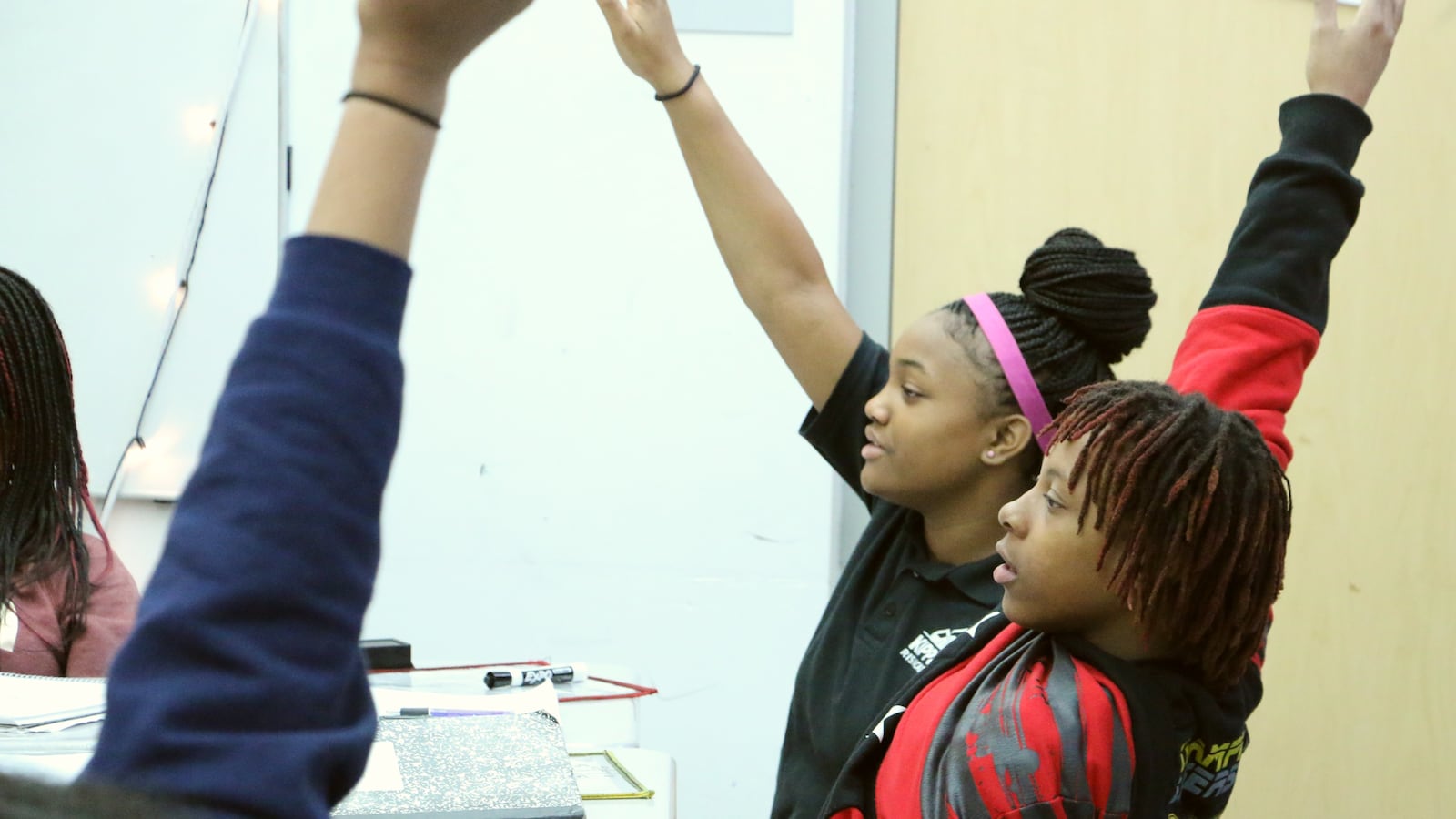In 2008, less than 10 percent of Newark students attended charter schools. Today, one in three does.
After a decade of explosive growth, Newark’s charter schools have morphed from a sideshow to a parallel school system. Fueled by former Gov. Chris Christie and deep-pocketed donors, their expansion offered thousands of families new school options — with more-established charters sometimes vastly outperforming their district counterparts. But the spreading sector also ensured the demise of some neighborhood schools, blew a hole in the district budget, and often provoked ferocious resistance to further charter encroachment, which helped propel Ras Baraka into City Hall.

The charter proliferation is far from over. Within five years, nearly 27,000 students who go to school in Newark — well over 40 percent of the total — could be attending charter schools, according to a projection by Rutgers University associate professor Julia Sass Rubin based on school expansions approved by the state.
Yet whether those projections are met will depend on demand by families, charter-school capacity, and perhaps even the political climate. Still, some district-school advocates are already bracing for the worst — including more school closures and potential service reductions — if the charter sector keeps expanding.
“It’s growing at an alarming rate,” said school board member Reginald Bledsoe. “It’s going to have an impact.”
Today, about 33 percent of students who attend Newark schools — or roughly 17,000 students — go to charter schools. (More than 1,300 of those students live outside Newark, since some charters can enroll students beyond the district.)
The state has signed off on nearly 7,000 more charter seats to be available by the 2022-23 school year, according to state data compiled by Sass Rubin, who teaches at the Edward J. Bloustein School of Planning & Policy. If all those seats are filled and district enrollment stays flat at about 34,200 students, then the share of students who go to school in Newark and attend charters could climb as high as 44 percent.

That projection — which excludes pre-kindergarten students — is based on several assumptions.
First, it assumes the district’s enrollment will remain steady — which would require the district to add new students to replace those who decamp for charters, as it has in recent years.
Second, this scenario assumes that existing charters remain open. But the state education department forced the closure of three low-performing Newark charters last year and another in January. (Those schools are excluded from the enrollment count.)
Finally, it assumes the sector will reach the full enrollment permitted by the state — which hasn’t historically been the case. This year, about 85 percent of state-approved Newark charter seats are filled, according to data provided by Sass Rubin, who is working on a statewide analysis that compares charter approvals to subsequent enrollments.
“Just because they’ve been approved,” she said, “doesn’t mean they will actually happen.”
Critics say the excess seats suggest the supply of charter schools has started to outstrip demand among families, and that charters are requesting more slots than they need.
But charter proponents push back against that claim. They point to city enrollment data showing that 49 percent of Newark families applying to kindergarten last year listed a charter school as their top choice.
Demand was highest for North Star Academy and KIPP New Jersey, which each operate several schools in Newark. More than 550 families listed KIPP as their first choice for kindergarten though only 448 seats were available across the network, which includes eight Newark schools. (Demand was also high for several district schools, including Ann Street — which had the third highest share of families rank it first — a sign that parents may care more about schools’ track records and reputations than who runs them.)
Charter operators offer several reasons why they may not fill all the seats they applied for.
Some said it made sense to stockpile extra seats during the charter-friendly Christie administration, under which the number of charter students doubled. “While the getting is good, and Christie is approving just about anything that sounds stable, why don’t we just go and apply for additional charters so we can have those in our pocket?” asked one charter leader, describing the thinking of some of his school’s board members.
Others said growth plans sometimes bump up against human limitations. In order to open a new school, charter operators must first find an ample supply of strong leaders — a challenge that can bedevil district and charter schools alike.
“When we haven’t opened in the past, it’s been because we didn’t yet have a principal that we thought was ready,” said KIPP New Jersey CEO Ryan Hill, adding that incoming principals at KIPP go through a yearlong training and school-planning process. (KIPP currently serves about 4,100 students in Newark, but has been approved to grow to 7,800 students.)
Another obstacle is securing space, as charter schools do not get state money as district schools typically do for facilities. Charters may also face political resistance: In 2012, the Newark school board voted against plans to lease four district buildings to charters — though at that time the board’s votes were non-binding.

Now that the board has regained control of the school system, it’s possible charters could have a harder time securing space in district buildings. Bledsoe, the board member, said he supports parents who choose charter schools — still, he would rather reserve district buildings for district schools.
“I don’t believe in the idea of allowing network schools to expand and we’re not expanding,” he said.
If Newark’s charters do keep spreading, more money will flow out of the district’s budget.
This school year, the district will transfer about $237 million — or a quarter of its budget — to charter schools, up from $60 million in the 2008-09 school year. Gov. Phil Murphy has proposed boosting Newark’s budget by 5 percent next year, but lawmakers must still sign off.
Newark Public Schools spokesman Paul Nedeau said the district will be able to keep investing in its schools if the state sends more money its way. He said the district is focused on “continuing to improve the quality of all schools in Newark” — charter and district — and that “the last few years show that with collaboration and thoughtful management this is an achievable goal.”
Hill of KIPP New Jersey agreed. He said his network was committed to being a “good neighbor” to the district, which was one reason why it lobbied the state for more school aid alongside Newark officials — including Mayor Baraka, who has shown a willingness to partner with the charter sector since taking office.
But even as KIPP tries to ease its impact on the district, “our first responsibility is to the families of Newark and to give them good options,” Hill said.
“If there are families who are still asking for KIPP schools that don’t have access to them,” he added, “then we’ll continue to grow.”
Do you get Chalkbeat Newark’s weekly newsletter? If not, sign up here.

